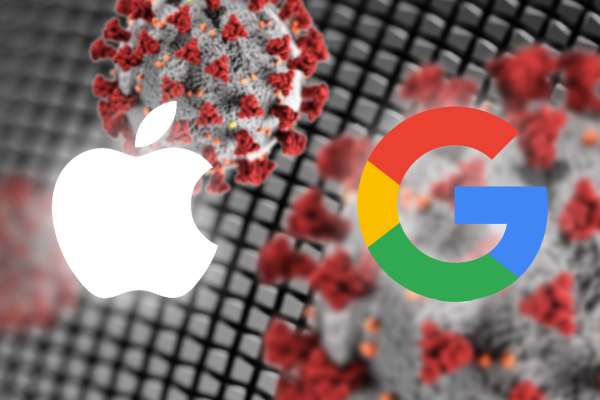Published on the 24/06/2020 | Written by Heather Wright

Is it really a fail for Covid tracing apps?…
They were hailed as a critical component to end restrictions in a world grappling with Covid and the potential of other future virus outbreaks, but high profile failures of several government contact tracing apps are casting shade over digital contact tracing.
The latest to fall is the UK’s NHS app, which minsters had hailed as ‘world beating’. The app, which was three months and millions of pounds in the making, was tested in May, only to be dumped in June, with Secretary of State for Health and Social Care Matt Hancock announcing that the focus would instead switch to an alternative from Apple and Google.
Hancock blamed an impasse with Apple for the abandonment of the NHS app, saying it wouldn’t work because ‘Apple won’t change the system’.
‘Apple won’t change the system.’
iPhone apps go to sleep when not in use, and can’t be activated by Bluetooth. That reportedly lead to the NHS app recognising just four percent of iPhones, and 75 percent of Android phones during testing.
It’s a flaw Australian’s will be well familiar with. The Digital Transformation Agency has admitted that the Australian CovidSafe provided ‘poor’ – 25 percent or lower –communication abilities between locked iPhones at launch in April. The DTA has since included new code from the NHSX app to improve CovidSafe’s Bluetooth performance on iOS devices, including when the device is locked.
New Zealand’s offering, NZ Covid Tracer, meanwhile offers up no Bluetooth or proximity tracking. The app, which on launch was dubbed ‘manual contact tracing plus a little bit more information’ by Andrew Chen, research fellow at the University of Auckland’s Koi Tu Centre for Informed Futures, had recorded just 573,000 registrations by earlier this week, with 63,160 posters created by businesses, according to the Ministry of Health.
The app has received several updates since its late May release, including providing the ability to receive ‘contact alerts’ if you have been checked into a location at the same time as someone with Covid-19, and the ability to share the digital diary with contact tracers. A fix for the bug preventing Android users from scanning the QR codes was finally released this week.
Even Singapore’s TraceTogether, hailed as the leader in digital contact tracing, has stumbled. It’s locked on around two million users – still well shy of the 4.2 million needed to hit the magic 75 percent penetration some say it needs to be effective (others suggest 60 percent will suffice). It’s also reportedly having issues with Bluetooth tracing on iPhones, with Singapore reluctant to use the Apple/Google offering because of the limitations on what data can be collected.
Singapore is now looking at a ‘TraceTogether Token’, with 300,000 of the dongles being manufactured to provide digital contact tracing for those without smartphones. New Zealand too, is continuing to look at the use of a token.
The Brookings Institute, meanwhile, has cautioned that contact tracing apps are not a solution, saying it has ‘serious doubts’ that voluntary, anonymous contact tracing through apps can free citizens from lockdowns.
But all isn’t lost in the search for a workable contact tracing app.
In the UK, Hancock says their new offering – albeit with no indication of when it will be available – will blend ‘the best bits’ of the NHSX-developed UK app, which calculates distances between contacts more effectively than Apple and Google, with Apple and Google’s Exposure Notification API.
Apple and Google have put high stock in privacy, placing some restrictions on how data can be gathered using their offering, favouring a decentralised approach where data is kept only on the users phone. The UK, on the other hand, favoured a centralised approach, where anonymised data was held in an NHS database – something that proved yet another stumbling block.
Last week Italy and Germany launched their own apps, based on the Google/Apple model, with Ireland also pushing ahead with an app based on Apple and Google’s technology. They join a growing number of countries opting to take the Apple/Google route, including Switzerland (the first to develop an app taking advantage of the API), Latvia, Japan, Poland, Denmark, Saudi Arabia and Uruguay.
Apple and Google too, continue their work on exposure notification. The two companies released the API for apps to use back in May. That’s the API that’s now being used by all those countries mentioned above. It enables contact tracing apps from public health authorities to work across both Android and iOS devices, but it’s not a contact tracing app itself: Users still need to have an app from their country’s health authority. Android users can find it under Settings > Google , while for iPhone users, it’s under Settings > Privacy > Health. (If your iPhone is pre-iPhone 6s, released in late 2015, you won’t be able to receive the update.)
Later in the year, exposure notification will be added at the operating system level. When that happens, the system will continue to operate as it does now, but without the need for an app to be installed for the identifier information to be installed. Once a user has opted in, the system will send out and listen for Bluetooth beacons just as it does in the earlier version, but in this case without requiring an app to be installed. If a match is detected, the user is notified and prompted to download an official app, if they don’t already have one.
It’s a key move in pushing wider adoption – something that’s necessary for contact tracing to truly succeed – and provides a glimmer of hope for digital contact tracing.



























